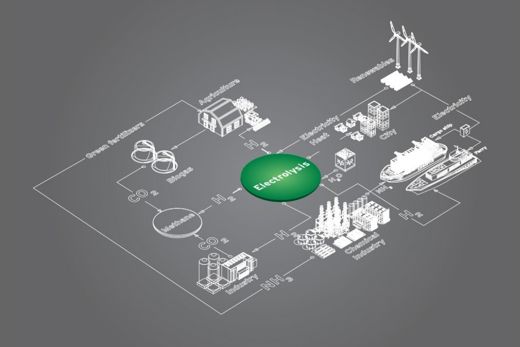The future of renewable energy is being altered by these technology.
Thanks to declining prices and growing demand for greener energy sources, the market for sustainable power is transforming. The next five technological developments will have an immediate impact on business.
Environmentally friendly power production has upended international commercial sectors, and change brought on by renewable energy continues to move extremely quickly. Indeed, not too long ago, few people would have predicted the scope of the recent developments made to aid nations in beginning the process of decarbonizing their economies or expected well-known companies like Google to invest sizable sums in solar energy projects.
Some of these developments have been consistent, while others have been unexpected. Others are just getting started, and people aren't yet fully aware of how important they are. Here are five of the most significant trends and developments in sustainable power. Over the previous 10 years, some have significantly changed the energy sector, while others are about to cause disruptions.
Solar and Wind
For the most part, wind turbines and solar-powered chargers address the future of ecologically friendly energy. The two power sources are seen in many rural areas and have transformed the market.
"The greatest impact has been wind and solar-driven advancements, resulting in an extraordinarily quick decline in power creation expenses," says Petteri Laaksonen, Research Director at Finland's Lappeenranta-Lahti University of Technology's School of Energy Systems (LUT). According to the International Energy Agency, environmentally friendly power is expected to make up 30% of the world's energy by 2024, with the majority of this driven by solar and wind energy extensions that continue to be carried out at a remarkable rate. This is an advancement in the use of solar-powered chargers, which accounted for 60% of the 2019 sustainable power limit. Indeed, even innovation behemoths like Apple, Google, and Amazon have invested in solar energy.
Energy storage
The ability of energy storage to accelerate the transition to renewables has been widely studied in logical circles and appears to be crucial in the next few years. "Energy capacity will be necessary in the framework due to changing wind and sun focused creation," Laaksonen explains. "There are various energy storage advancements, and the competence is to integrate them in a framework."
Distributed Generation
The rising rationality and importance of a purported digital age is causing a peaceful upheaval in the sector of renewables. This represents the age of local power, whether in the retail or corporate sectors: from solar chargers on private residences to plants that use aggregated intensity and power frameworks. There are numerous advantages to raising the age of conveyed power, ranging from less reliance on unitary power sources to boosting lattice dependability and making restricted-scope sustainable power sources practical. Circulated age is substantially more successful when combined with smart frameworks, which are monitored by PCs to adjust transmission. There has been rapid growth in conveyed age recently, and this is expected to continue; according to one estimate, the disseminated age market will be valued at EUR 147.5 billion by 2026.
Power-to-X
One of the game-changing new discoveries, Power-to-X, is an umbrella name for numerous cycles that convert power into intensity, hydrogen, or limitless produced fillers. It provides a great opportunity to speed the transition to renewables by ramping up tailored fuel production and rapidly reducing petroleum derivative emissions in industries ranging from steel production and food production to synthetics and compost.The invention can also play an important role in addressing long-haul energy capacity issues, such as regulating the highs and lows in supply from sustainable sources. "Power-to-X is necessary since re-investing in complete frameworks and innovations (avionics, delivery, rock solid, and, shockingly, electric automobiles) is absurd in the next twenty years when we truly want to realise the transformation," adds Laaksonen.
Electrification
Experts agree that the growth of jolt in the coming decades will accelerate the transition to renewables. According to some estimates, the renewables-based zap of European industry, structures, and movement will allow the continent to reduce its energy-related CO2 emissions by 90% by 2050.This pattern is now discernible. For example, installing a world-first 100 MW of utility-scale transmission-associated energy capacity close to high-volume power associations will enable a public organisation of quick electric vehicle charging stations. The project is expected to have a significant role in hastening the UK's energy progress push toward net-zero discharges by 2050. Laaksonen emphasises that new uses for power will emerge, such as the production of hydrogen from water via electrolysis, the reuse of carbon dioxide by air capture, and the production of nitrogen for composts via air capture. He expects that in the long run, power demand in European countries might increase by 3–4 times, but the cost will decrease (because of the boom in sustainable power). Change to electricity is critical to decarbonizing economies, but there are additional, more subtle, knock-on effects, such as improved energy security (autonomy from petroleum product exporters) and improved urban air quality.





0 comments:
Post a Comment